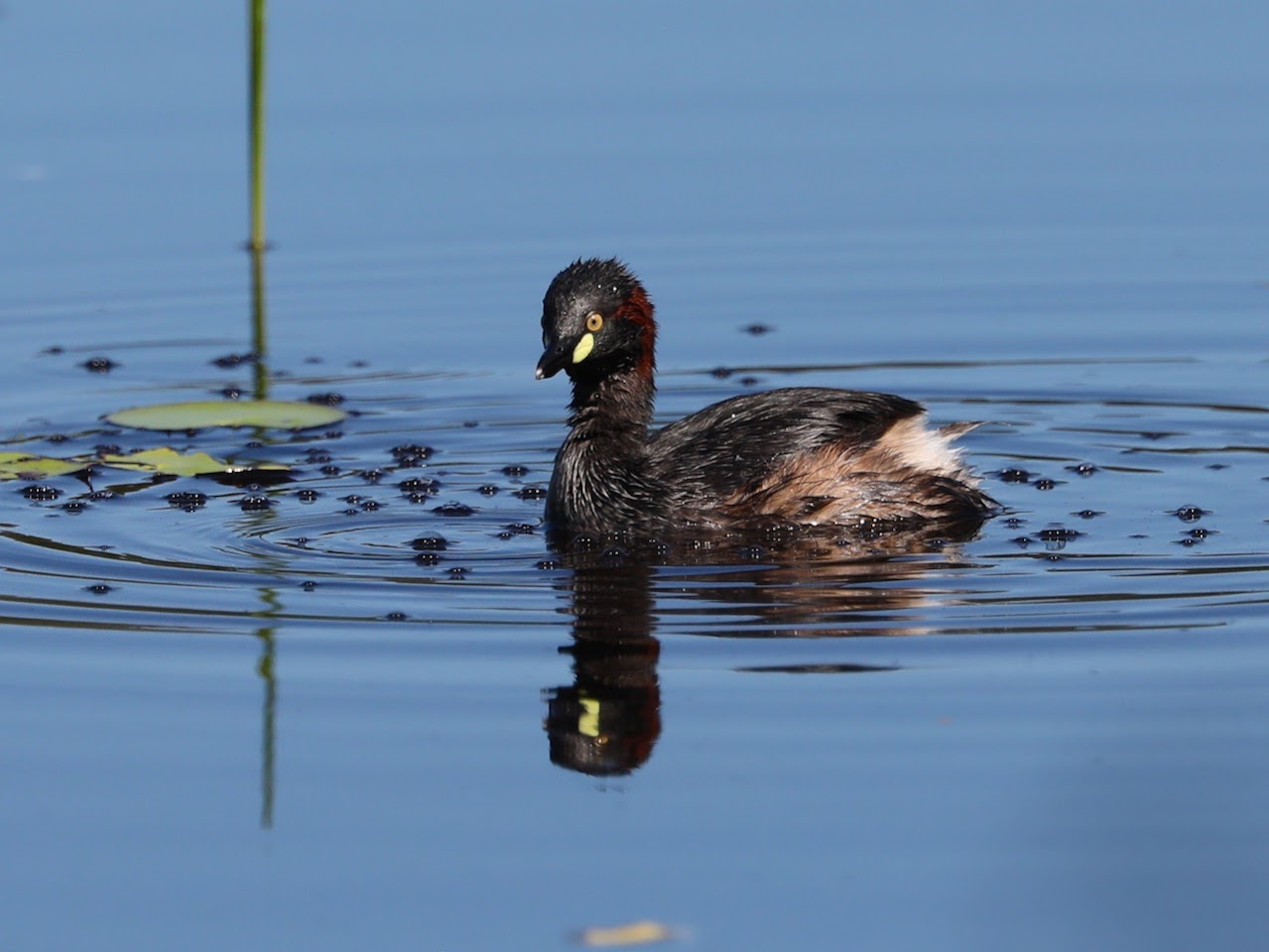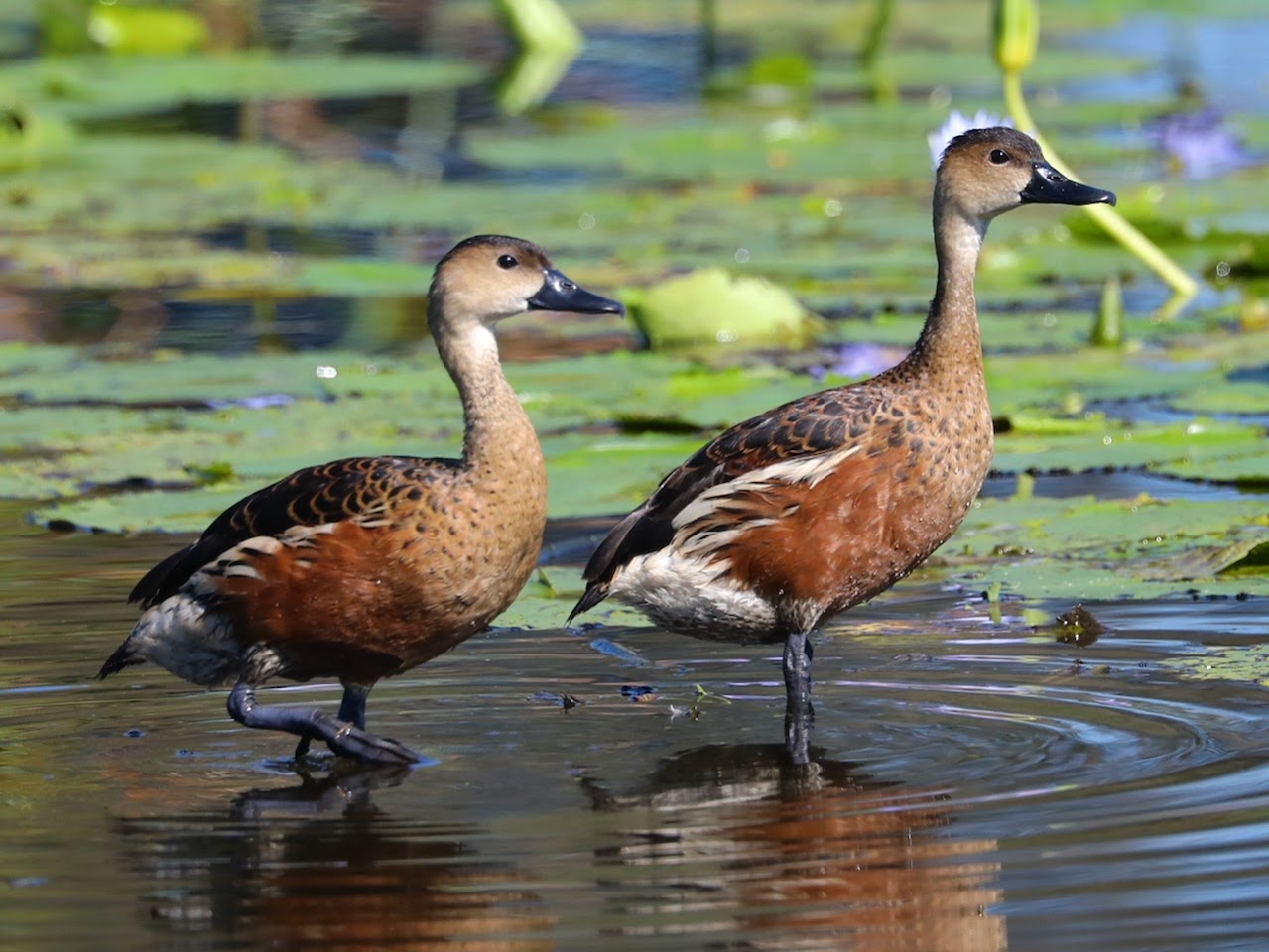For at least eight years now Red-necked Avocets have been present for extended periods on Jones Bay near Bairnsdale. Their numbers vary from hundreds up to around 2,000 birds. They seem to spend time, depending on weather conditions, and I guess food supply, between the Jones Bay Phillips Lane segment, Jones Bay proper and also at Victoria Lagoon at Hollands Landing - and possibly other places on the Gippsland Lakes I don’t know about. There is no record of them breeding on the Gippsland Lakes so the recent presence of juvenile birds indicates they have left the area to breed and have returned again post breeding with young ones.
While doing Gippsland Lakes Important Bird Area surveys of water dependent birds at Jones Bay recently I noticed some of the Avocets were resting along the Eastern shore of the Phillips Lane segment and knowing some of the birds were likely to be flagged I decided to approach them with my camera to see if any flag text could be captured. As it turned out six flags with photos were ID’d - they were AAU, CNL, AWV, CAZ, CND and AJP, and a photo of each can be found below. A couple are very fuzzy but can still be deciphered.
I used my binoculars to find a flagged bird in the large flock and then focused my hand held camera with a 600mm focal length telephoto lens on the flagged bird. I took multiple photos of each flag hoping at least one would be clear enough to read the flag.
Please click on photos to enlarge.
At one point something spooked them and they all took to the air but soon circled around and came back, allowing me to capture two more flags making six in total.
The flag sightings have been reported to the Australasian Wader Studies Group via the new Birdmark portal at https://vhost2009.hosted-sites.deakin.edu.au/importing/import.php
You can find out more about Birdmark and how to use it to report any flagged waders you might find here: https://vhost2009.hosted-sites.deakin.edu.au/importing/about.php
The report I received from Birdmark showed the birds were caught and flagged between 2002 and 2017 on Westernport Bay at either Stockyard Point Lang Lang or Yallock Creek near Kooweerup.
I encourage birders to capture the text/numbers of any flagged shorebirds seen and report them to AWSG via the link above. By doing this you will be participating in citizen science by making an important data contribution to shorebird study. Birders who enjoy birds making the effort to capture flag details and report them is the least we can do as the mostly volunteer effort to catch and fit flags and bands to birds is enormous by comparison. Reporting flagged birds from beyond the catching sites adds great value to AWSG’s efforts.
The best way to capture flag sightings is with a digital camera fitted with a telephoto lens or a camera with digital zoom, although a good spotting scope may also be useful - binoculars are rarely adequate to capture the letters and or numbers on flags unless you are very close to the flagged bird/s.







































